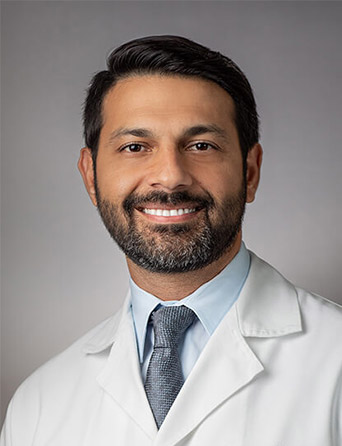Join Our eNewsletter!
Subscribe to our monthly newsletter to receive encouraging advice to help you lead a healthy lifestyle.

Mohs Surgery for Skin Cancer: What It Is and How It’s Used
Up until the late 1960s and 1970s, the only readily available methods of skin cancer treatment were wide local excision, curettage and electrodessication (which involves an injection of medicine and scraping of the tumor), and radiation. While the cure rates with these methods were high for primary tumors, treatments could result in unnecessary scarring and had higher risk of recurrences.
In the late 1960s, one method – Mohs surgery – began to emerge as a more precise way to remove skin cancer while largely sparing surrounding healthy tissue. A general surgeon, Dr. Frederic Mohs, began developing the method in the 1930s, and after many years of refinement, it became a widely used technique for removal of basal cell carcinomas and squamous cell carcinomas, which are the most common forms of skin cancer. These days, Mohs surgery is also used to treat early-stage melanomas, sarcomas, and other less common types of skin cancers.
How Is Mohs Surgery Different?
Mohs surgery differs from other methods, such as wide local excision, because cancerous cells are removed in layers and examined during the surgery rather than after. The technique involves removing a layer of skin, examining cells under a microscope, and repeating the process layer by layer until no evidence of cancer remains. See how Mohs surgery is performed at Kelsey-Seybold here.
When Is Mohs Surgery Recommended?
Mohs surgery is most beneficial when other skin cancer treatments haven’t been effective or when the cancer is in an area where it’s vital to preserve healthy tissue for functional or cosmetic purposes.

The procedure is typically recommended for skin cancer that:
- Is located in areas that are cosmetically sensitive or prone to the recurrence of skin cancer, such as the eyes, ears, nose, mouth, hands, feet, or genitals
- Is aggressive or causes large lesions
- Recurs despite previous treatment
- Develops in an area where scar tissue is already present
- Has lesion borders that are difficult to define
- Affects an immunocompromised patient or a patient who has had radiation therapy
What Are the Advantages of Mohs Surgery
In addition to the procedure being minimally invasive and largely sparing healthy tissue, Mohs surgery is also:
- Convenient. While this precise surgery can take several hours, it’s an outpatient procedure under local anesthesia with much less downtime than traditional surgery requires. At Kelsey-Seybold, Mohs surgery is performed in a dedicated suite at our Memorial Villages Campus.
- Less Costly. Because Mohs surgery is an outpatient procedure, it’s less costly than treatments performed in a surgery center or hospital setting and it’s covered by most health insurance plans.
- Highly Effective. Mohs surgery has a cure rate of up to 99% and has the lowest recurrence rate of any skin cancer treatment method.
- Immediate Results. Unlike traditional surgery, where the results may take several days, the skin cancer is completely removed during the Mohs surgery procedure. Patients go home knowing the cancer has been successfully treated and they can begin the healing process.



